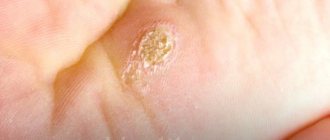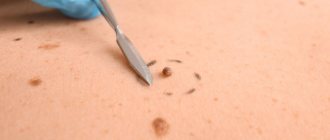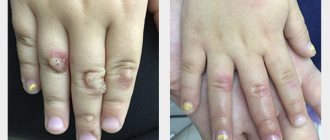Abdominoplasty is a plastic surgery aimed at restoring the former contours of the abdomen. The operation allows you to solve problems arising from sudden weight loss, pregnancy, and separation of the rectus abdominal muscles. During abdominoplasty, excess skin is eliminated, excess subcutaneous fat, the so-called “apron,” is removed, and various scar deformities are corrected. At the same time as abdominoplasty, it is possible to correct existing hernias (umbilical hernias, hernias of the white line of the abdomen). The operation gives high aesthetic results in both women and men. As a result of the operation, the surgeon forms new contours of the abdomen, eliminating excess volume and sagging tissue that cannot be dealt with on their own (with the help of various diets and physical exercises).
Prices for abdominoplasty
Operation
Price
Abdominoplasty
from 450,000 rub.
- Classic abdominoplasty
: a correction that involves a horizontal transverse incision in the suprapubic area. During the operation, the surgeon removes excess subcutaneous fat and skin, including skin with stretch marks. As a result of this operation, patients receive a smooth and aesthetically attractive abdomen with a neat, well-disguised suture. - Abdominoplasty with installation of a surgical mesh
: this technique is used in cases where the patient has diastasis of the rectus abdominis muscles (divergence): abdominoplasty is complemented by the installation of a surgical mesh, which has a frame function and prevents repeated divergence of the anterior abdominal wall. Most often, diastasis occurs as a result of pregnancy and childbirth and, practically, cannot be corrected except for surgical suturing of the muscles. - Abdominoplasty with navel transfer
: in case of a large volume of sagging abdomen, the surgeon can remove up to 30-50 cm of excess skin and subcutaneous fat; such a volume of surgery requires another surgical procedure - transfer of the position of the navel - due to the need to move it to a higher position. - Abdominoplasty with liposuction of the flanks (sides)
: in addition to the classical technique of performing the operation and recreating an aesthetically attractive anterior abdominal wall, the plastic surgeon (if necessary) performs liposuction of the sides and back, which allows you to form new contours of the waist and make the figure even more attractive.
Abdominoplasty is a classic operation that is indeed required by a large number of people. Today, only the technique with a longitudinal incision allows achieving high aesthetic results. This area (scar area) is perfectly camouflaged under underwear, and after some time (about a year) the seam becomes almost invisible. The operation helps to cope even with such a problem as sagging skin in the umbilical area.
Sergei Nikolaevich Blokhin
Professor comments on the peculiarities of using the methodology
When is abdominoplasty needed?
Abdominoplasty is indicated if there is excess skin in the abdominal area - the so-called fat apron. Ptotic (sagging) tissue can completely cover the bikini line, reaching the surface of the hips and even the knees. Removal of abdominal fat
reduces the risk of type II diabetes, heart disease, and certain types of cancer, including ovarian cancer.
Abdominoplasty allows you to eliminate the most common aesthetic defects in the abdominal area:
- pronounced stretch marks;
- umbilical hernia;
- scars after appendectomy and gynecological operations;
- excess skin in the navel area;
- divergence of the rectus muscles.
Another indication for abdominal plastic surgery
- postpartum diastasis. According to research published in the International Journal of Obstetrics and Gynecology, abdominal muscle separation after pregnancy is present in 35-60% of women. Diastasis cannot be eliminated with the help of physical exercises, since in this case the linea alba, a structure made of connective tissue (tendon), on the sides of which the rectus abdominis muscles are located, is stretched. Diastasis creates not only emotional, but also physical discomfort: women with this pathology often experience urinary incontinence, lumbopelvic pain, and pelvic organ prolapse.
Types of scars after plastic surgery
Unlike a regular scar, the suture after abdominoplasty heals under strong tissue tension, which means there is a high risk of re-opening the wound and causing microtrauma in the epidermis.
How quickly the wound heals depends on the size of the problem. If the fold of skin was large, the surgeon will need to make a large incision, which means the scar will take longer to heal after surgery.
There are several types of abdominoplasty:
- Classic . The skin is cut through the entire abdomen strictly horizontally. The suture runs at the level of the pubis between the protruding bones of the pelvis. If there is a lot of loose skin, the position of the navel changes and an additional incision will be required to move it.
- Lateral. It is used to remove excess skin and fatty tissue not only from the abdomen, but also from the sides, and from the lower back. Visually, the figure takes on a clearer shape, but the operation requires several incisions, which means the patient will have to deal with not one, but several scars at once.
- Vertical. Used in cases of sudden weight loss to remove sagging skin or if diastasis recti is present. It involves two seams - horizontal at the level of the pubis and vertical to the sternum.
- Circular. A complex operation that involves a scar around the entire waist. Used for comprehensive removal of fatty tissue from the abdomen, sides, lower back and correction of the outer thighs.
- Extended. In addition to removing excess from the abdomen, the entire hip area is corrected.
- Mini abdominoplasty. Involves a small incision no larger than 20 cm to remove small excesses, partial liposuction, etc.
With proper operation, daily preventive maintenance during the rehabilitation period and the absence of complications in the body, after a year the scar should look like a light, barely noticeable thin thread (normotrophic scar). However, there are factors that can negatively affect wound healing after surgery and provoke the formation of a rough pathological scar:
- race;
- skin color (phototype);
- genetic predisposition;
- state of the endocrine and immune systems;
- long healing;
- pronounced inflammatory reaction;
- insolation (sun exposure) in the early stages after wound healing;
- use of certain medications;
- wound injury;
- foreign bodies in the wound (suture material, permanent fillers).
If the patient has something from this list, it is recommended to pay special attention to the prevention of the formation of an aesthetic scar during the rehabilitation period: keep the wound clean, follow all the doctor’s recommendations and begin treating the scar only after complete epithelization (healing) of the damaged area .
Find out which method of correcting scars and stretch marks is optimal for you!
doctor Svetlana Viktorovna Ogorodnikova.
doctor
Types of scars
How quickly a scar can be reduced depends on its type and age. So, scars are:
- keloids;
- hypertrophic;
- normotrophic;
- and atrophic.
Keloid scars are the most noticeable and difficult to treat. It rises above the surface of healthy skin due to overgrown collagen fibers. They create pressure on the capillaries in the epidermis, so the young keloid has a red or pink color. Such a scar grows over several years and significantly exceeds the size of the original wound, constantly itches and causes discomfort.
A hypertrophic scar is similar in appearance to a keloid, however, it remains within the original wound, without growing beyond its boundaries and without increasing in size after its complete epithelialization.
Atrophic is often called a pockmark, pit or pothole - it is located below the level of the skin. This is due to a lack of collagen fibers. Skin with atrophic scars loses its firmness and elasticity, ages earlier and has an unsightly appearance.
A normotrophic scar is a natural phenomenon indicating normal healing after surgery. It looks like a not very noticeable thin white line. It may degrade and disappear on its own within a year. It is also possible to speed up the process of getting rid of it by taking a course of applications with anti-scarring agents.
Stages of rumen maturation
To avoid serious consequences, it is necessary to start prevention on time. But it is important to wait until the wound has completely healed, otherwise premature intervention will only worsen the situation. What happens to the seam at different time stages:
- 1 month after surgery. The wound heals completely, however, due to increased blood flow, the scar looks swollen and bright. Appearance deteriorates over time.
- In six months. The scar is still red, but part of the fibrous tissue is destroyed, due to which the seam gradually aligns with the general relief and becomes lighter.
- After 1 year, the scar becomes thinner and lighter. It is not as noticeable as in the first months after abdominoplasty and is considered mature.
- 5 years or more . The shape and size remain unchanged, and improvements may be observed, but not as noticeable as with a one-year-old scar.
For the best effect, it is recommended to start treatment after a month, when the doctor is sure that the wound has completely healed and no infection has occurred. A mature scar is more difficult to reduce than a fresh one: the process has already stabilized and “irregular” fibers have formed inside the tissue. Fresh scars are much easier to correct.
What is the difference between abdominoplasty and mini abdominoplasty?
Mini abdominoplasty is a surgical tightening of the lower abdomen through a single incision along the bikini line, without moving the navel. The operation is less traumatic compared to full abdominoplasty, and the recovery period after it is shorter. Mini abdominoplasty - a way to remove skin from the abdomen
for minor aesthetic defects: pronounced stretch marks, ptosis and loss of tone of the tissues of the abdominal wall.
For a more extensive procedure—full abdominoplasty—the surgeon makes two incisions: around the navel and along the bikini line. Then:
- separation and elevation of subcutaneous fat;
- elimination of diastasis, stitching of muscles;
- transfer and formation of the umbilical opening;
- excision of excess skin;
- installation of subcutaneous drainage, sutures and bandages.
Full abdominoplasty is indicated in the presence of diastasis, the need to remove skin after losing weight,
local fat deposits and deformation of the umbilical ring. The main difference between the two surgeries is the significantly smaller bikini line incision with a mini abdominoplasty and the transfer of the belly button with a standard abdominoplasty.
The type of intervention depends on the stage of diastasis, the size of the abdominal apron and the degree of its prolapse. Abdominoplasty is often combined with liposuction. And also, if necessary, it can be combined with intimate plastic surgery, surgical correction of breast shape - surgical interventions that correct body changes after pregnancy and childbirth. Read more about combined plastic surgeries here.
What is the difference between abdominoplasty and liposuction?
Liposuction is a plastic surgery to remove excess fat deposits. During liposuction, the plastic surgeon makes mini-punctures in the areas of greatest accumulation of fat cells, and with the help of cannula tubes and vacuum removes the fatty tissue. That is, during liposuction, only excess fat is removed, and diastasis and excess skin, if present, remain in the same condition. The procedure is low-traumatic, the rehabilitation period after it is shorter and easier compared to abdominoplasty
.
Abdominoplasty is a surgical procedure that affects the deeper tissues of the abdominal wall. After surgery, a visible scar remains in the lower abdomen, with the exception of endoscopic mini-abdominoplasty, when suturing of the rectus abdominis muscles is performed through two percutaneous incisions.
Simultaneous operations in VIRTUS
Slow healing
For one reason or another, postoperative wounds sometimes heal slowly. Where the seam is located, the skin turns blue and a crust forms. Slow wound healing occurs:
- if during the operation the surgeon greatly stretched the skin;
- if the patient is a heavy smoker;
- due to individual characteristics of blood flow.
In case of deep tissue necrosis (this rarely happens), the doctor corrects the secondary scar area in order to improve the aesthetic appearance of the patient’s figure.
Which is better: liposuction or abdominoplasty?
Abdominoplasty improves only the anterior abdominal wall. At the same time, fat remains in the waist, back and hips. Liposuction allows you to get rid of the accumulation of fatty tissue, but does not solve the problem of diastasis and sagging skin. The main goal of abdominoplasty is to eliminate excess soft tissue and skin-fat flap, as well as to bring the edges of the rectus abdominis muscles closer together. The main goal of liposuction is to remove excess fat cells. Both operations are aimed at improving body contours, but are indicated for patients with different histories of aesthetic disorders.
What are the dangers of abdominoplasty?
Complications of abdominoplasty can occur in the postoperative period and are often associated with non-compliance with medical recommendations regarding wearing compression garments. In the first days after surgery, tissue fluid may accumulate in the area of the anterior abdominal wall. This happens because during a tummy tuck, the surgeon peels off a large area of skin, then stretches it and stitches it back together. Accordingly, voids form under the skin layer. To prevent the formation of tissue fluid, compression is used.
How much does abdominoplasty cost in Ukraine?
Cost of a tummy tuck
depends on the category of complexity of the operation and the technique of performing the intervention. The price of a full abdominoplasty at the VIRTUS Institute starts from 75 thousand UAH, a mini abdominoplasty will cost a little less - 48,000 UAH. Surgical navel surgery and hernia removal (hernioplasty) are more affordable - 9,000 UAH. and 19,000 UAH. respectively. Surgical costs are as of July 2022 and are subject to change over time.
Abdominoplasty is a complex surgical procedure that requires compliance with the surgical technique and highly qualified surgeon. Therefore, the low cost of an operation in an unknown clinic should raise questions in the patient: is there a guarantee that tummy tuck
will be successful, and the stomach will be perfectly smooth, without lumps and unaesthetic large scars?
4. Complications
Abdominoplasty can overload the circulatory system and sharply increase intraperitoneal pressure, as a result of which serious disorders can develop, including pulmonary edema.
Inactivity and physical inactivity during the recovery stage (it takes from several weeks to several months) are fraught with various congestive phenomena, the further progression of which can result in pneumonia or pulmonary embolism.
Finally, one of the most dangerous and severe complications is intra- or postoperative infection of the surgical field. Here the prognosis becomes uncertain, and the situation may get out of control - at least it requires urgent intervention and an intensive antibacterial response.
Fortunately, in modern and well-equipped clinics, the percentage of severe complications can be minimized, but in no medical institution and under any price list will it be zero. Therefore, it is worth recalling once again: abdominoplasty is a complex abdominal operation, the need for which should be dictated by the proven ineffectiveness of all other procedures and methods in a given individual case, the absence of contraindications and a reasonably high probability of achieving the desired results.










